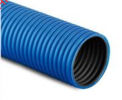I'm about to work on a project that involves mounting a camera at a lake that will be 100 feet from the power and internet source.
Trenching seems to be the only option.
I guess my main question is what will I need in terms of cable, and specific type of cable and conduit to shield from the weather.
Will will the signal degradation be at 100 feet?
The camera has not been picked out yet, but it should have an ethernet port.
Thank you all,
Trenching seems to be the only option.
I guess my main question is what will I need in terms of cable, and specific type of cable and conduit to shield from the weather.
Will will the signal degradation be at 100 feet?
The camera has not been picked out yet, but it should have an ethernet port.
Thank you all,

